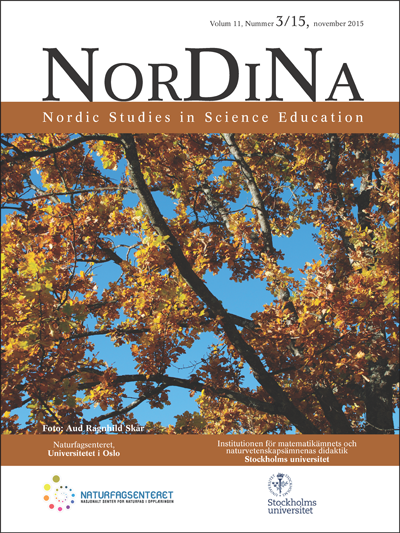Scaffolding open inquiry: How a teacher provides students with structure and space
DOI:
https://doi.org/10.5617/nordina.878Keywords:
natural science, science inquiry, 16, case studyAbstract
The present case study examines a teacher’s scaffolding strategies supporting his students during a twelve-week open inquiry project at an upper secondary school. We use interaction analysis to identify how he provides structure and space in the different phases of open inquiry as well as how it constitutes the students’ inquiry process. The study reveals that the teacher scaffolded this open inquiry in two opposing ways; he created space for the students to make their own experiences and ideas, which eventually set up the need for more directed scaffolding to discuss the challenges students experienced, and directing students’ ideas in certain directions in phases with structure. We suggest that the interplay between structure and space creates what can be seen as a driving force providing both exploration and direction for open inquiry. Moreover, we propose that the dual concept of ‘structure and space’ can work as a thinking tool to promote teachers’ competence on how to scaffold more authentic versions of scientific inquiry in schools.Downloads
Additional Files
Published
2015-11-02
Issue
Section
Articles
License
Authors who publish with this journal agree to the following terms:- Authors retain copyright and grant the journal right of first publication with the work simultaneously licensed under a Creative Commons Attribution License that allows others to share the work with an acknowledgement of the work's authorship and initial publication in this journal.
- Authors are able to enter into separate, additional contractual arrangements for the non-exclusive distribution of the journal's published version of the work (e.g., post it to an institutional repository or publish it in a book), with an acknowledgement of its initial publication in this journal.
- Authors are permitted and encouraged to post their work online (e.g., in institutional repositories or on their website) prior to and during the submission process, as it can lead to productive exchanges, as well as earlier and greater citation of published work (See The Effect of Open Access).


